[EMW3071] Large LED panel 600x600x25 CCT 3000-6500K WiFi Aigosmart
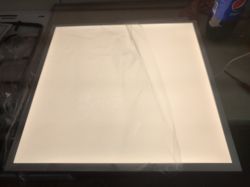
I will present here a short test of a large (both in size and price - £250!) 60cm by 60cm LED panel, offering control of temperature and white brightness levels via a mobile app. I'll check if it can be easily swapped with the firmware so as to free it from the cloud and connect it with Home Assistant.
The topic originated from the fact that a colleague outside the forum was looking for some series of large LED panels that could be easily freed from the cloud and connected to HA, and I undertook to perform preliminary tests of the already selected candidate.
Purchase of AgPanSMART6025 panel We bought the panel on a Polish auction site for a whole 250zł. We had planned to buy several, but we took one as a test to know if it would be suitable for connecting to the Home Assistant, if anything. Here's a screenshot of the listing:

Parameters:
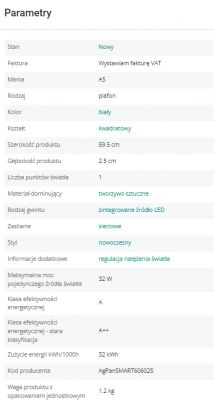
Note the manufacturer's code: AgPanSMART606025 . It seems to be an abbreviation for AigoSmart Panel 60x60x2.5.
There are no specifics there. Let's still see the dimensions of the panel:
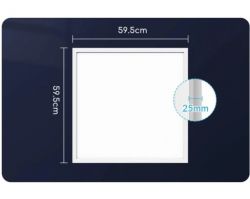
Let's see what we get in practice:

It wasn't very well protected. No Styrofoam, just a little filler-macrofoam they gave to the package:
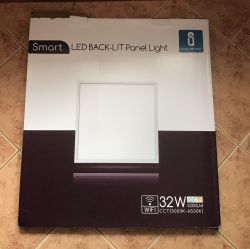
In the cardboard box is the panel and driver, already without any additional protection from damage in transit:
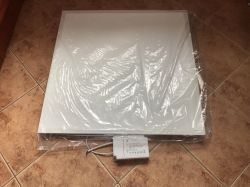
Let's take a look at the box some more:
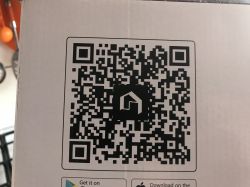
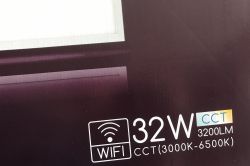

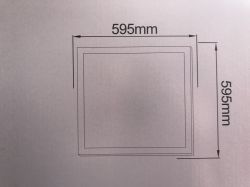 We also have a QR code - it leads to the AigoSmart app, which unfortunately is not compatible with Tuya. We won't hook this device up to Tuya if we have a home on it.
We also have a QR code - it leads to the AigoSmart app, which unfortunately is not compatible with Tuya. We won't hook this device up to Tuya if we have a home on it.The other side of the light:
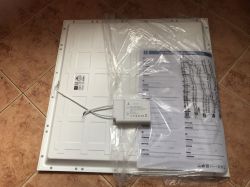
Driver's markings are: YL42800-AK51 (WiFi)
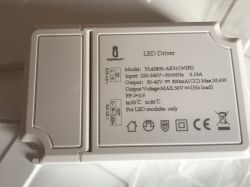 Instructions:
Instructions: 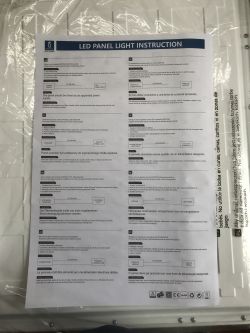
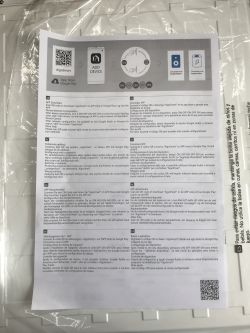
Pairing with the manufacturer's app For Tuya products, I don't test this at all anymore, but since it's an Aigosmart, I figured it was worth checking to see if it could be paired easily. I put the device into pairing mode according to the instructions and the lamp started giving light signals:
Interestingly, the phone showed bars from PWM brightness level control:
Application I installed on an iPhone, its interface somewhat resembles that of Tuya but there are far fewer devices:

I gave directions to my WiFi and waited for a response:

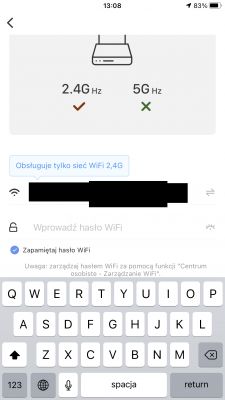
Success:
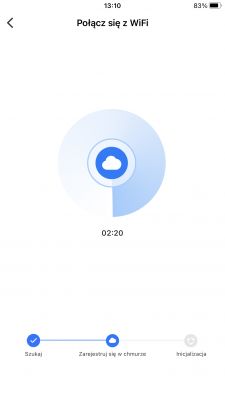
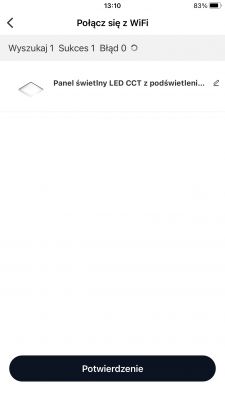
It wasn't that hard. So what does the interface look like in the application?
The capabilities of the manufacturer's application The application's interface is quite poor, But what more can you expect here?
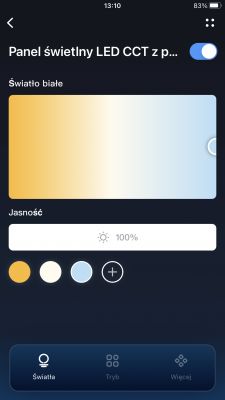
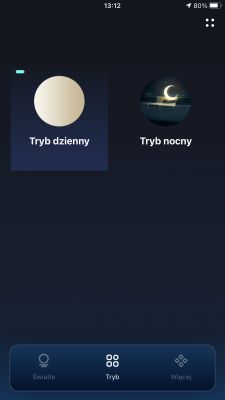
 Of course simple timers and automations are there:
Of course simple timers and automations are there:
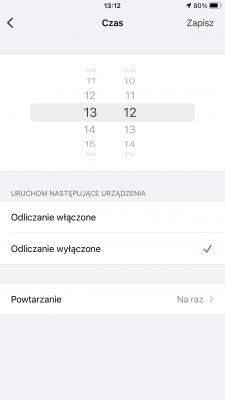

There is some grouping by room:
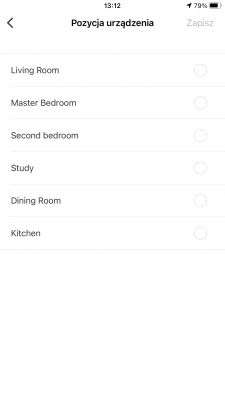
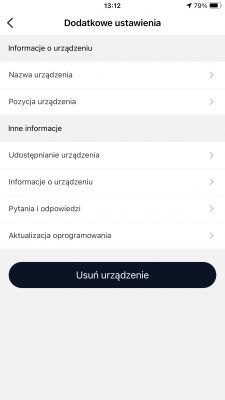
Some sharing (by phone numbers...):

Some device parameters:
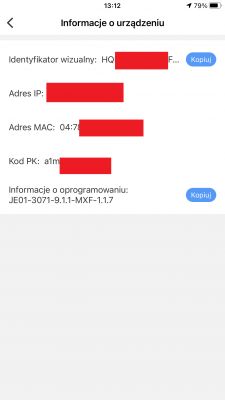
Effects:


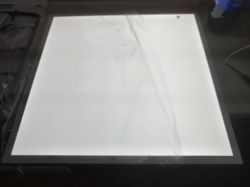 But we want to free the device from the cloud and connect it to HA, so it's time to look inside.
But we want to free the device from the cloud and connect it to HA, so it's time to look inside.
Inside of the LED controller
I didn't open the LED panel itself, because why should I? Everything is in a separate box:

The wires are protected quite nicely:
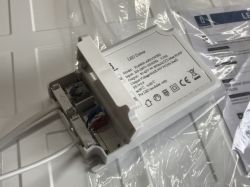
We take a look and.... disappointment:
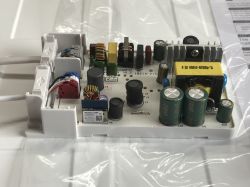
There is some exotic WiFi module:
 EMW3071 made by MXCHIP. In fact, I have already encountered one similar one:
EMW3071 made by MXCHIP. In fact, I have already encountered one similar one: The RGBCW on MXCHIP EMW3072 - Aigostar Smart 18872 18W RGB+CCT Is there any documentation of EMW3071 on the web?
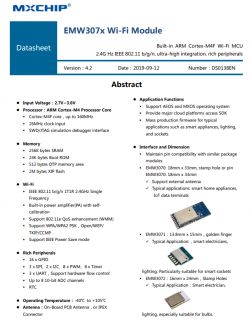
This means we have a Cortex-M4F core here.
Displacements:

 This strongly reminds me of TYWE2S and CB2S/WB2S. The power and ground locations also match.
This strongly reminds me of TYWE2S and CB2S/WB2S. The power and ground locations also match.
Apparently MXFlasher can program it:

There is also bootloader information:
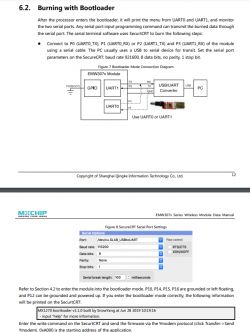
But let's go back to the board analysis:
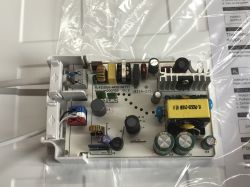
There must be separate inverters, one for the LEDs, the other for the WiFi module.. The one for LEDs is based on the AC874B:
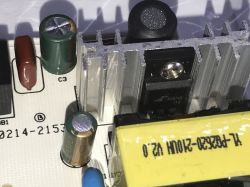
The module doesn't seem so bad, there's a solid heatsink, there are filters on the input and it's quite rich, which you don't always find in Chinese products:
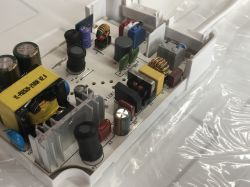
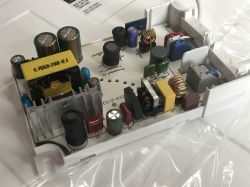
The transformer has a Y capacitor that connects the primary and secondary sides:

It's time to free the wires and remove the entire PCB:
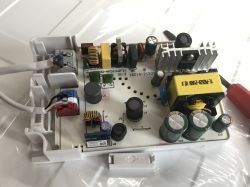
Much of the circuit is made using SMT technology:
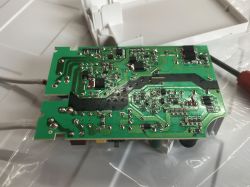

You can clearly see the separate sides, primary and secondary of the circuit.
Here is the WiFi module connected:
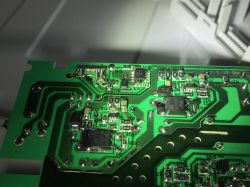
3.3V for the WiFi module is provided by the BP8516:
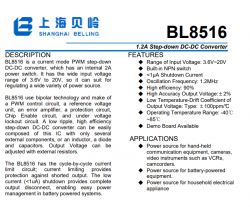
 Only its input voltage is up to 20V, so it is not powered directly from the mains. Here there must be a different inverter beforehand.
Only its input voltage is up to 20V, so it is not powered directly from the mains. Here there must be a different inverter beforehand. The NCE0117K MOSFET, SS510B diode and a small controller with a not very clear designation (H5119L?) look like controllers separately for warm and cold color. If that controller is the H5119L, the whole thing probably looks more or less like this:

And again, you can see that this doesn't run on line voltage, but on low voltage from the aforementioned power supply.
Some more information about the H5119L:
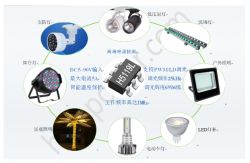
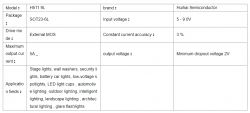
 This is where we have the Schottky diodes on the output of the transformer, the main one, from the low voltage. That's probably where the flyback converter is. It's the one that converts the mains voltage to low voltage for the rest of the circuit:
This is where we have the Schottky diodes on the output of the transformer, the main one, from the low voltage. That's probably where the flyback converter is. It's the one that converts the mains voltage to low voltage for the rest of the circuit: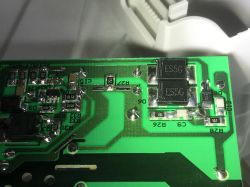
This is the primary side of the already mentioned inverter, you can see the legs from the keying transistor and the components that are probably the fade from the primary winding, there is also the inverter controller in SMD:
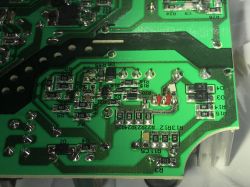
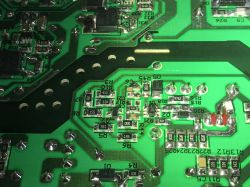
I'm not sure of the designation of this inverter controller, probably not 5H5L? If someone wants to, they can look up and fill in the subject.
Well, also the filter section from underneath:

How to make this device cloud free? At this moment there is no software for MxChip. I haven't managed to get a suitable SDK up and running yet.
But a brief analysis of the PCB shows that TYWE2S or ESP12 will fit here. So just swap the WiFi module and set two PWM pins for it. Tasmota can handle it. Here's a quick rundown:
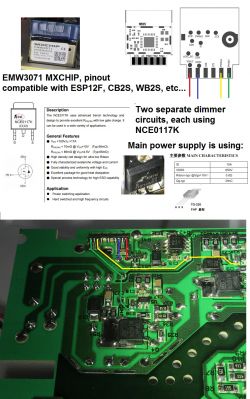
I will be doing this process and will describe it in the next topic.
Problem. Squealing coils Unfortunately, the non-standard WiFi module is not the only one of this device's problems. As it turned out after a short while of testing, in a certain range of configuration of white temperature and brightness, you can simply hear the operation of the device's coils.
I thought I caught this on video, but unfortunately you can't hear this effect on the recording, so you'll have to take my word for it here. I don't know if it's just this copy that has it, or if it's a common occurrence in this series.
Summary
This was the second product reviewed linked to the Aigosmart app and also the second product on MXChip -. is too early, to draw conclusions, but one gets the impression that Aigosmart products are based precisely on these little-known MXChips.
What to the board I have no complaints rather, even one could say that it is made quite well, only I do not know why in a certain range of light color I just hear the operation of the inverters on board. This is already the first of the drawbacks of this product.
The second drawback is that we will not release it easily from the cloud. At this point you have to do a transplant of the WiFI module. All in all, the ESP12 is not expensive, so with the great price of this lamp, you can survive this, but it would still be nice to use what is already on board.
In the future I would like to add support for this chip for my multi-platform firmware for IoT devices , which supports BK7231N, BK7231T, XR809, W600/W601, W800/W801 and BL602 at this point, but it's not a priority at this point since I know of only two devices using this platform so far....
In summary, I can't very much recommend this product, unless someone wants to convert. And yet the final drawback is that it won't connect to the Tuya app, so when you buy it you are forced to install another app. This also means that even deciding on the manufacturer's solutions, we will not do some automation, because if, for example, we have a light switch from Tuya then this panel will not communicate with it...
And without changing the firmware HA will not 'talk' with it - because it is not Tuya. Or maybe, however? If anyone has tried, let me know.



Comments
And what does the panel itself look like, the luminous elements? [Read more]
I'm afraid I didn't check the acct. And why such a question? Concern about excessive heating? [Read more]
And in the past a simple P-type plafond and a switch on the wall was enough. Now it's people who complicate their own lives. Following this line of thought, in some time you won't even be able to get out....... [Read more]
Indeed, a large part of the products advertised as "smart" are rather toys and water features, but here I would like to draw attention to some useful features: - plafond CCT allows you to select the color... [Read more]
And this approach makes sense. Toys can make a mood, or illuminate like a normal light source. However, it would be good for at least one point of light in the room to be in I/0 format. Has a colleague... [Read more]